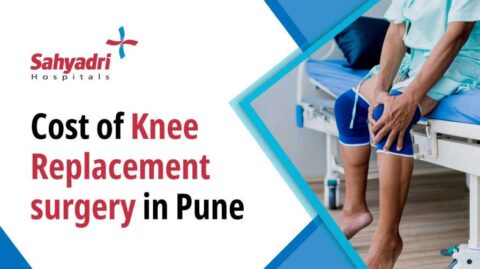Home > Blogs > Orthopedic > What Are the Foot Problems After Knee Replacement?
What Are the Foot Problems After Knee Replacement?

You may require knee surgery in case you are suffering from pain, stiffness, loss of function, or instability. These problems affect your daily life’s functioning and leave you no other choice than to replace them. Your worn-out knee with the cartilage is removed and replaced by a plastic or metal one in the process. This process again helps you to move your knees freely and carry out your work.
Advantages of knee replacement surgery
There are numerous advantages of going through knee replacement surgery. The most common ones include:
- Improved mobility
- No more pain
- Increased quality life
According to research, 90 percent of the people who go through knee replacement surgery say that it has improved their quality of life.
How frequently complications arise?
It was estimated that around 600,000 people were going through knee replacement surgery every year, and only about 2 percent of them were suffering from complications like infection. Moreover, if you stay at the hospital after your surgery, the risk of suffering through complications reduces even more.
For people who have grown old, the risk of complication is higher:
- About 1% of people are exposed to the threat of infection
- Fewer than 2% might develop a blood clot
Furthermore, in very rare cases, you can also develop osteolysis. This is an inflammatory disorder that arises when a plastic of the implant goes out microscopic wear. As a result, it essentially dissolves or loosens.
Complications after knee replacement
Many patients who go through knee replacement surgery have a very positive outcome. They feel happy about their decision as they are able to return to their normal conditions again. However, for some individuals, some complications arise. Here are some problems faced by patients:
- Knee stiffness: This is the most common type of problem suffered by people. It involves problems relating to difficulty in moving legs while going down the stairs, getting out of a chair, sitting in a chair, etc.
- Clunking sound: People usually get shocked when they hear noises coming out of their replaced knee. However, there is no problem in conditions in which there is no pain relating to the clunking sound. It is not uncommon to hear such sound coming out of a metal or plastic joint. But the main problem arises when there is pain associated with the sound.
- Foot problem: The heel bone after the surgery gets a bit stiffer because of the ankle joint’s new biomechanics. As a result of the hindfoot’s stiffness, the pain in the midfoot and forefoot area increases. It further contributes to plantar fasciitis. Moreover, if you feel your foot or ankle pain is increasing day by day, you should get yourself evaluated.
- Infection: It is the most feared problem after going through knee surgery. Moreover, there are two types of infection that can occur: early infection and the other is called late infection. Sometimes the infection can be too complicated to cure and may require removing the entire knee replacement. In 1981, around 9.1% of people who went through knee surgery experienced infection. However, it has dropped to 1 to 2% in recent years because of the emergence of new practices.
Have queries or concern ?
How long will the new joint last?
9 out of 10 people who opted for total knee surgery enjoyed their new joint for about 20 years. For some people, it is even more than that.
However, in the case of partial knee replacement, people are most likely to take a revision. 10% of people need to go through the process after ten years of getting their knees replaced.
Further, the chance of getting a revision increases in case the patient is overweight or is involved in heavy manual labor.
What is revision?
Some people need to go on the second round of knee replacement surgery. This second surgery is more complicated than the first one and is known as revision.
Conclusion
Knee replacement surgery is a standard treatment that thousands of people go through every month. Also, a majority of them do not have any complications at all. It is a wise choice to know all the complications beforehand and keep a check if any of them arises.
However, if you follow your healthcare professional’s instructions and exercises, it can be prevented.
Patient Feedback
Great doctors, Good facilities, caring and helping staff. I recommend this hospital for day care services.
![]()
![]()
Sangram Shinde
All doctors r very good. There treatments is best. Other staff also good. The service of nurses is great...Hospital is always clean.
![]()
![]()
Vaishali Aitawade
All services provide by hospital are nice and on time. Doctors are polite and co-operative with patient.
![]()
![]()
Ankita Jagtap
All services provided by hospital is good. Hygiene maintained well.Even at night good care provided.
![]()
![]()


